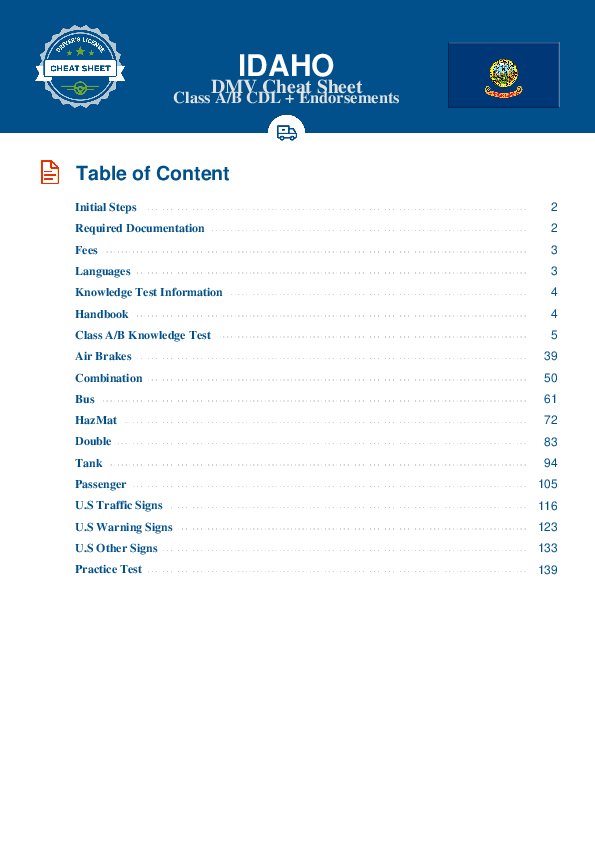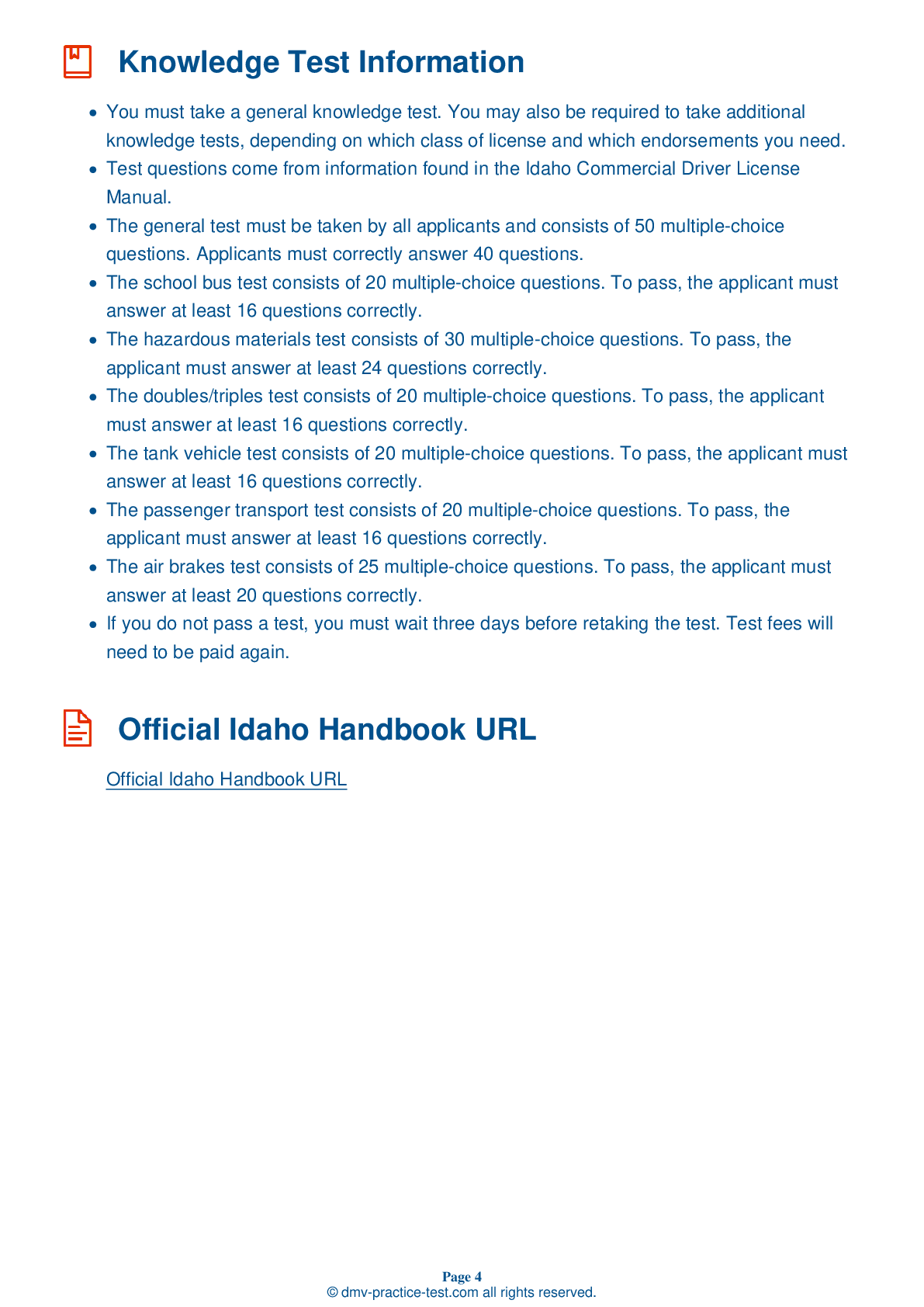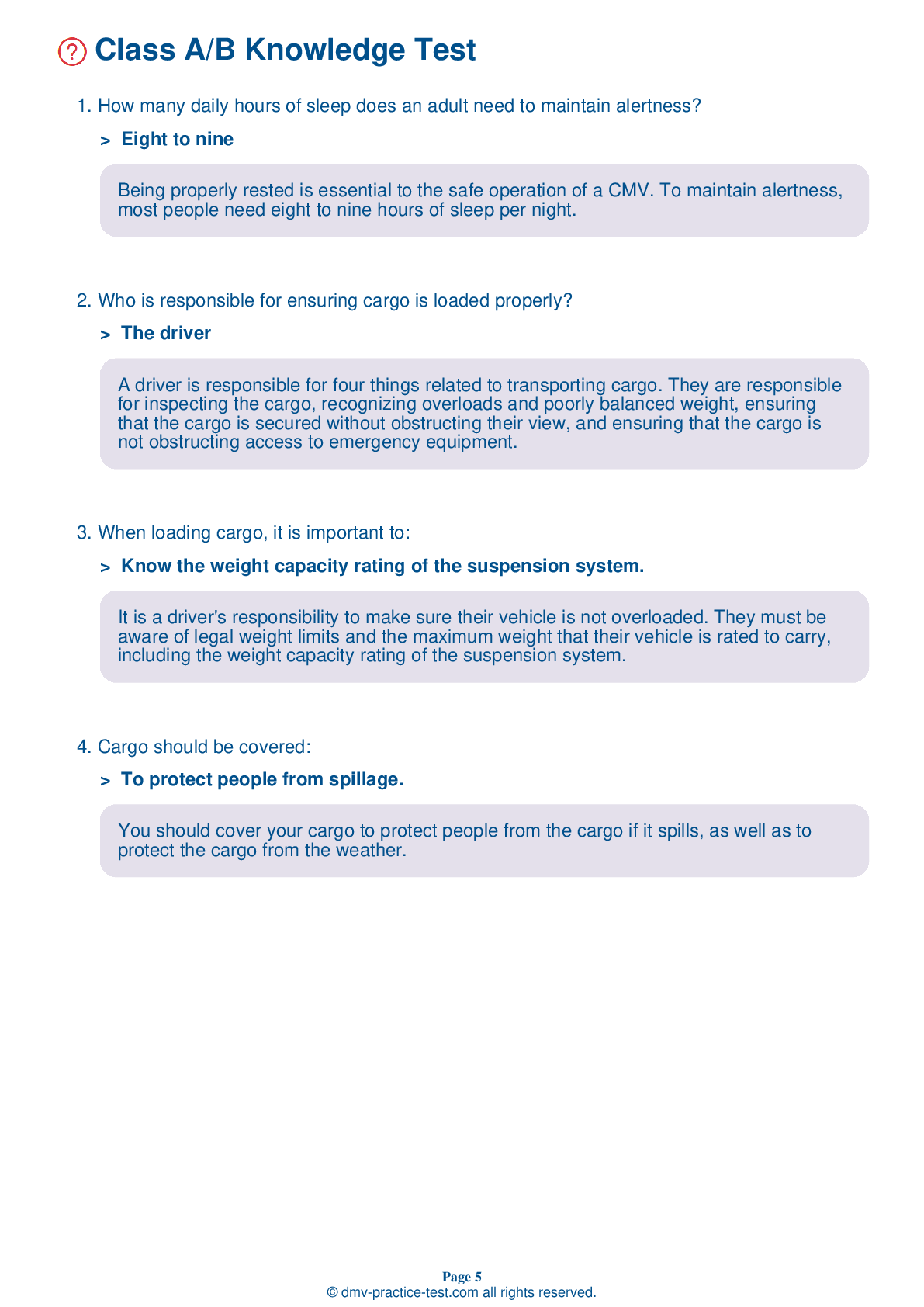Passenger #1
Passenger Endorsement | Idaho 2025 #1
Train for FREE with our Idaho CDL passenger endorsement practice test online. The official exam test consists of several obligatory parts, with all of them checking your knowledge of different blocks of road rules. If you need to obtain a ID DMV passenger endorsement in 2025, practice as much as possible. Free sample tests published on our website will help you check and improve your knowledge and boost your grades. Please bear in mind that DMV requirements for issuing a CDL permit with passenger endorsement may vary from state to state.
20
16
20
1 . Traction is important in:
You will not be able to brake or steer your vehicle without adequate traction. Ensure that your tires are in proper working condition before beginning a trip.
2 . If driving so slowly that you could impede the flow of traffic, you should:
If you must drive so slowly that you will impede the flow of traffic, you should turn on your four-way flashers to alert drivers behind you (as long as local laws allow the use of flashers).
3 . Rust around wheel nuts may mean:
Rust around wheel nuts can indicate that the nuts are loose. If you find rust near the wheel nuts, check their tightness before beginning to drive.
4 . Improperly loaded cargo can:
Improperly secured or loaded cargo can be very dangerous. For example, loose cargo could fall in the event of a sudden stop, potentially injuring or even killing the driver.
5 . How many daily hours of sleep does an adult need to maintain alertness?
Four to five
Being properly rested is essential to the safe operation of a CMV. To maintain alertness, most people need eight to nine hours of sleep per night.
6 . Roof hatches on buses:
On a bus, it is acceptable to lock some roof hatches in a partially-opened position to provide fresh air, but this should not be made a regular practice. Remember that opening these hatches will slightly increase a bus's clearance.
7 . After a tire has been changed, the driver should stop after a short distance to:
After changing a tire, you should stop a short distance later to recheck the tightness of the tire's lug nuts.
2025 Idaho | Frequently Asked Questions
A CDL Class B license in Idaho allows the holder to operate single vehicles with a gross vehicle weight rating (GVWR) of 26,001 pounds or more, or a towed vehicle not exceeding 10,000 pounds GVWR. This includes straight trucks, large buses, segmented buses, and dump trucks with small trailers. A special endorsement may be needed for certain vehicles.
A Class B CDL license in Idaho allows the holder to operate single vehicles with a gross vehicle weight rating (GVWR) of 26,001 pounds or more, or tow a vehicle not exceeding 10,000 pounds GVWR. This includes straight trucks, large buses, segmented buses, farm labor vehicles, and dump trucks with small trailers. Special endorsements may be required for certain vehicles.
To acquire a Class B CDL license in Idaho, the applicant must be at least 18 years old for intrastate transport and 21 for interstate transport. They must pass a vision test, obtain a Medical Examiner's Certificate, pass a General Knowledge test, and a skills test which includes pre-trip inspection, basic controls, and on-road driving. Prior to testing, applicants need a Commercial Learner's Permit (CLP).
In Idaho, you must be at least 18 years old to qualify for a Class B CDL license for intrastate transport (within Idaho only). However, if you intend to drive interstate (across state lines), you must be at least 21 years old. These age requirements are set by the Federal Motor Carrier Safety Administration.
Specific endorsements aren't necessary for a Class B CDL license in Idaho, but they can broaden the range of vehicles you can operate and materials you can transport. These endorsements include passenger, school bus, tanker, hazardous materials (HazMat), and double/triple trailers. To get these endorsements, you must pass additional knowledge and skills tests.
The Class B CDL skills assessment in Idaho includes a pre-trip vehicle inspection, a basic vehicle control test, and an on-road driving test. You'll demonstrate your ability to inspect your vehicle, control its operation, and drive it safely in various road and traffic conditions. The specific maneuvers and operations you'll perform depend on the type of vehicle you're testing in.
Yes, Class B CDL license holders in Idaho are limited to operating vehicles with a gross vehicle weight rating (GVWR) of 26,001 lbs or more, or a vehicle towing another vehicle not exceeding 10,000 lbs GVWR. They cannot drive Class A vehicles (tractor-trailers) without the appropriate license. Also, without specific endorsements, they cannot transport hazardous materials or more than 15 passengers.
In Idaho, the written CDL test is primarily offered in English. However, some locations may offer the test in Spanish. It's important to note that all CDL applicants must pass an English proficiency test, as federal regulations require drivers to read and speak English to ensure road safety. Always check with your local DMV for available language options.
Yes, you can request test accommodations for the Class B CDL written exam in Idaho due to disability. The Idaho Transportation Department adheres to the Americans with Disabilities Act (ADA) and provides reasonable accommodations. However, you must provide documentation to verify your disability. Contact your local DMV office to discuss your specific needs and to ensure the right accommodations are made.
If you fail the Class B CDL written test in Idaho, you can retake it. However, you must wait at least three days before you can try again. Keep in mind that each attempt may require an additional fee. It's recommended to study thoroughly using the Idaho CDL manual and online practice tests to increase your chances of passing on the next attempt.



